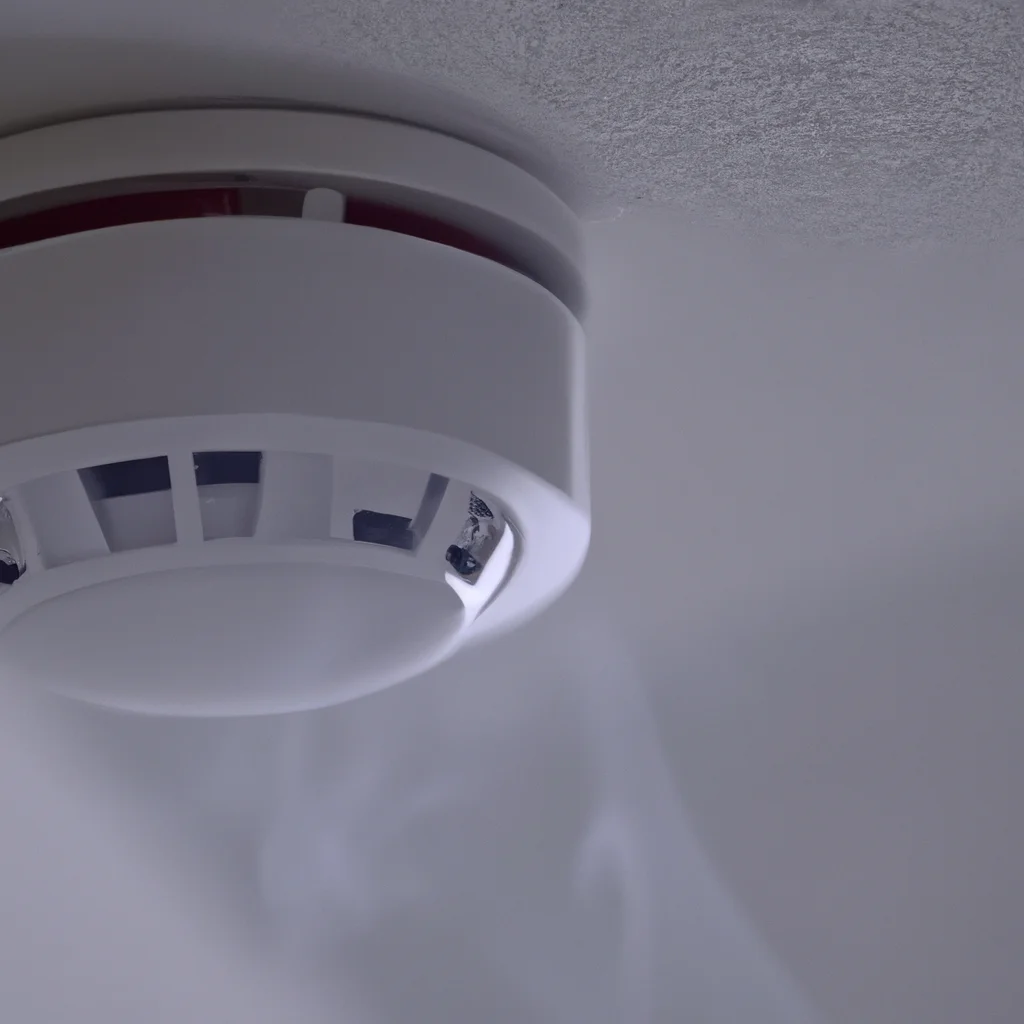How does a smoke detector detect smoke?


How does a smoke detector detect smoke?
A smoke detector is an essential device that helps detect smoke, which can cause fires. It is a crucial component of any fire alarm or smoke detection system. Smoke detectors work by sensing the presence of smoke in the air and alerting the occupants of a building of potential danger. In this article, we will look at how a smoke detector detects smoke, the different types of smoke detectors, and the technology behind smoke detection systems.
How does a smoke detector detect smoke?
Smoke detectors work by sensing the presence of smoke particles in the air. When smoke is detected, the smoke detector sends a signal to the fire alarm or smoke detection system, which alerts the occupants of the building to potential danger. There are two primary types of smoke detectors: ionization smoke detectors and photoelectric smoke detectors.
Ionization smoke detectors
Ionization smoke detectors use a small amount of radioactive material to ionize the air. When smoke enters the detector, it disrupts the ionization process, causing the alarm to sound. Ionization smoke detectors are particularly useful for detecting fast-burning fires that produce small smoke particles.
Photoelectric smoke detectors
Photoelectric smoke detectors use a light source and a light sensor to detect smoke. When smoke enters the detector, it scatters the light, causing the sensor to detect a reduction in light levels. The detector then triggers the alarm. Photoelectric smoke detectors are particularly useful for detecting slow-burning fires that produce larger smoke particles.
Smoke sensors
Smoke sensors are the heart of any smoke detector. They are responsible for detecting smoke particles in the air. Smoke sensors use two primary technologies: optical sensors and ionization sensors.
Optical sensors
Optical sensors use a light source and a photoelectric sensor to detect smoke. When smoke enters the chamber, it scatters the light, causing the sensor to detect a reduction in light levels. Optical sensors are particularly useful for detecting slow-burning fires that produce larger smoke particles.
Ionization sensors
Ionization sensors use a small amount of radioactive material to ionize the air. When smoke enters the chamber, it disrupts the ionization process, causing the sensor to detect a reduction in ionization levels. Ionization sensors are particularly useful for detecting fast-burning fires that produce small smoke particles.
Smoke detection technology
Smoke detectors have come a long way since their invention in the early 1900s. Modern smoke detection technology includes advanced sensors, microprocessors, and wireless communication capabilities. Some smoke detectors can even detect carbon monoxide, a deadly gas that can result from incomplete combustion in appliances such as gas stoves and furnaces.
Smoke detection systems
Smoke detection systems are designed to detect smoke in large buildings such as hotels, hospitals, and office buildings. Smoke detection systems use a network of smoke detectors that communicate with a central control panel. When smoke is detected, the control panel triggers the building’s fire alarm, alerting the occupants to potential danger.
Conclusion
Smoke detectors are an essential device that helps detect smoke, which can cause fires. Smoke detectors work by sensing the presence of smoke particles in the air and alerting the occupants of a building of potential danger. There are two primary types of smoke detectors: ionization smoke detectors and photoelectric smoke detectors. Smoke detectors use two primary technologies: optical sensors and ionization sensors. Smoke detection technology has come a long way since its invention in the early 1900s and now includes advanced sensors, microprocessors, and wireless communication capabilities. Smoke detection systems are designed to detect smoke in large buildings and use a network of smoke detectors that communicate with a central control panel.
Recent Posts
How do I create an engaging and informative online quiz or assessment?
Creating an engaging and informative online quiz or assessment can be a powerful tool for… Read More
What are the most effective methods for managing and reducing work-related stress in the hospitality industry?
Work-related stress is a common issue in the hospitality industry, where employees often face long… Read More
How can I improve my assertiveness and communication skills in a leadership position?
In a leadership position, assertiveness and effective communication skills are crucial for success. Being able… Read More
What are the key elements of a successful employee recognition and rewards program?
Employee recognition and rewards programs play a crucial role in motivating and engaging employees, as… Read More
How do I effectively manage and respond to customer feedback and reviews?
Customer feedback and online reviews play a crucial role in shaping a company's reputation and… Read More
What are the best strategies for effective time management as a stay-at-home parent?
Effective time management is crucial for stay-at-home parents who juggle multiple responsibilities on a daily… Read More